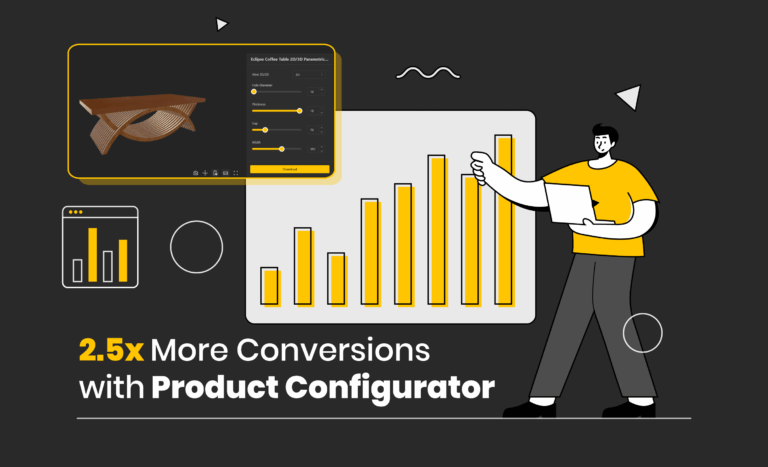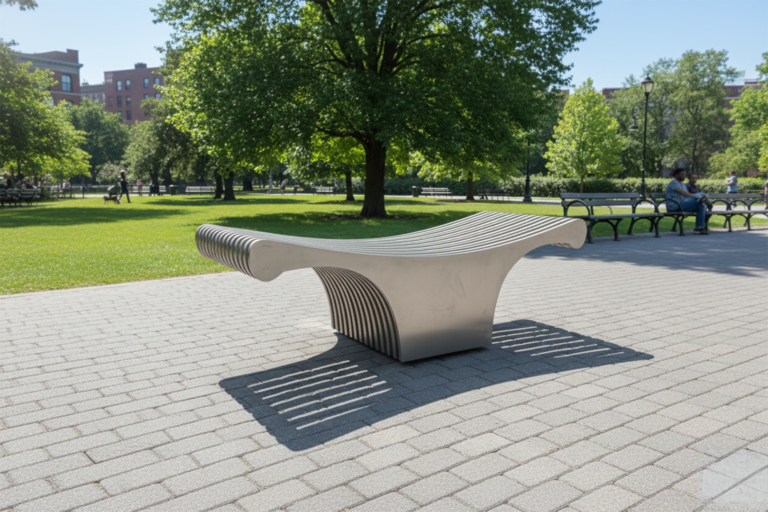Table of Contents
With a surge in innovations and technologies, the way we perceive various industries has changed considerably. The best part is that even niches like furniture designing and manufacturing have grown and evolved to a great extent owing to this shift toward a digital age.
Talking about the changing realm of manufacturing, over the next decade or so, global consumption is forecast to increase by about $23 trillion, and the consuming class by about 1.8 billion people.
The Manufacturing of the Yester Years
Think of a classic Charlie Chaplin movie and the way it portrayed the age-old factories. That’s how manufacturing has been perceived since time immemorial, at least by those who weren’t familiarised with the know-how of it.
But those who have seen the dynamics changing closely are acquainted with how it has witnessed a transformation, especially between 2017 and 1937. Think about the newfangled technologies we have now, including 3D Printing, robotics, automation, the Internet of Things, analytics, Big Data, Artificial Intelligence, and design-tech methodologies.
Now the question is, considering this constant change in the landscape of manufacturing, what will the scenario look like in 2029 or say 2042?
Chances are if you are a COO or an executive, this question might be a constant companion.
This article delves into the depths of where manufacturing as a field is headed. Moreover, it talks about the tools and technologies that can bring about a compelling change.
We are on the cusp of the Great Re-Make
We are observing a manufacturing industry catering to modern times. Therefore, it is hard for manufacturers to keep pace with the changing trends. The increasing demand for more amalgamated with budget constraints along with the need for fine-quality products and convenient handling defines the ongoing situation of this digitalized realm.
“The rate of technological change has gotten so fast that we need to inform the design to reflect it,” said Ryan Anderson, director of future technology for Herman Miller. As a result, it reflects that we are on the cusp of a great re-make about manufacturing.
Talking about trends, IKEA adapts trends in technology, says Marcus Arvonen, a senior designer for the company. “We’re not doing frontier solutions for a small group of early adopters,” Mr Arvonen said, but for a mass market.
However, with the intriguing change in trends, comes along a plethora of problems, specifically in the area of furniture manufacturing. This entails issues regarding costs, style, quality assurance, creation, delivery, sustainability, customizations, material wastage, and a lot more. This indicates that a fast-paced market like today requires technology that matches its speed. It hereby emphasizes that manual labour and design manufacturing can’t work anymore.
That’s where Computational Design comes into the picture…
Computational design is the answer to many questions related to the new-age aspect of furniture manufacturing. It encompasses the use of design methods that combine algorithms and parameters for solving problems by putting advanced computational strategies to use.

By providing multiple iterations to automate the process of repetitive tasks, computational design assists in streamlining the workflow of repeatedly performing such tasks. Image: Shutterstock
Computational design has become a popular choice among industries of various sorts in the AEC including architecture, furniture design, jewellery design, and interior design. This is because it is largely based on the factors of precision with speedy delivery.
Thus, it helps in obtaining cohesive, holistic, and efficient outcomes that outweigh production opportunities harnessed through manual labour.
We are living in a digitally disrupted world, Computational Design Tools are more than an aid
For organizations to remain competitive, they must think about the value chain from beginning to end, through all aspects of production. When it comes to Talking about this scenario of a digitally disrupted world, computational design tools serve a greater purpose than mere aid.
Tools such as the BeeGraphy Editor resonate with the needs of where the fraternity is headed. This is a flagship of computational design featuring its online computational design software with lots of smart features.
BeeGraphy is a company that bridges the gaps between the manufacturing process and today’s modern fast-paced world. We are soon coming up with a batch of advanced computational design features. You can check out the Alpha version of the software which is currently available upon signing up for free.
5 Ways Computational Design will change the way we work as Furniture Manufacturers
-
Explore multiple design options
A pragmatic way of designing that will enable you to delve into the multiple design options that can be obtained.
-
Get under the hood and access your Data
A streamlined way of putting together cohesive data fragments to utilise them and weave them seamlessly in the design and production process.
-
Automate Repetitive Tasks
Computational design helps in getting through the workflow of creating repetitive tasks again and again by offering multiple iterations to automate the process of repetitive tasks.
-
Test what your design is REALLY doing
Design and manufacturing not only have to be about aesthetics or creativity, there has to be a sense of practicality in it as well. The computational design offers you a hands-on approach that enables you in testing what your designs are doing for its users at large.

The computational design offers 3D designers a hands-on approach that enables you in testing what your designs are doing for their users at large. Image: Shutterstock
-
Think Algorithmically
Computational design helps in solving tasks through a systematic way of delving into problems and identifying them. Thus, with this methodology, you get to think algorithmically.
Top 8 Merits of Computational Design for Furniture Manufacturers that promise ROI
Owing to its wide array of benefits, computational design is a long-term game changer in furniture manufacturing. Specifically, when we look at the online computational design, it brings along a myriad of efficiency factors and benefits that can help enhance production both in quality as well as quantity.
-
Automatic Generation
The computational design offers the automatic generation of data that enhances the efficiency and accuracy of the entire fabrication and assembly process.
-
Efficient Nesting of Fabrication paths into sheets to Minimise Waste
Nesting facilitates the optimised use of raw materials to minimise wastage where the best outcomes are obtained under the appropriate quantity of materials.
-
Mass Customization: Hyper-personalise every iteration of the Product
Manual production isn’t a viable solution for curating customised productions. With computational design, this is possible even for mass production, where every iteration of the product can be hyper-personalised.
-
Automation of Documentation to make Assembly Easier
Through the succinct production system, you can automate the documentation process. This helps in streamlining the entire workflow, thereby making the assembly easier.
-
Budget Estimation and Optimization: Real-time Budget feedback upon changes
Owing to the optimisation of materials and designs, computational design facilitates budget estimation.
-
Production Agility
Since the entire system is precisely automated, the rate of production is enhanced considerably.
-
Greater Flexibility
Enhanced flexibility is perceived in the aspects of design, processing, budget, and more when automated tools come into the picture
-
Creating Disruptive Business Opportunities
Using this way of articulating designs can help in creating disruptive business opportunities. With appropriate tools like the BeeGraphy Editor, you can aid your furniture manufacturing business by incorporating parametric features for a holistic approach.
How will Computational Design change the way we Manufacture Furniture?

Manufacturers are not unfamiliar with the concept of transformation. However, continuous and long-term transformation is uncommon. In particular, during the present times, it is equally crucial to have a transformation strategy that ensures relevance in the upcoming years. Image: Shutterstock
Transformation isn’t new to manufacturers. However, sustained transformation is rare. And especially in times like now, having one transformation that guarantees relevance in the coming years is equally important.
Beegraphy is providing support to change-making companies, organisations, and brands. Through its wide range of tools and features it facilitates the transformation of a rigid and traditional way of manufacturing into more of a hyper-personalised and automated way of production.
What Next?
With the growing framework of the furniture manufacturing industry, exploring new computational design tools that aid the creation of collaborative and interactive designs is a must. BeeGraphy Editor is the first online 3D parametric/algorithmic modelling software that resonates with this notion.
It provides parametric modelling tool sets for creating computational models that can be used for CNC manufacturing, 3D printing, AR & VR platforms, and more. Moreover, it entails a real-time collaboration feature for designers, engineers, and manufacturers.
So what are you waiting for?
Sign up and give it a try to change the way you perceive furniture design and manufacturing. To know more: beegraphy.com










